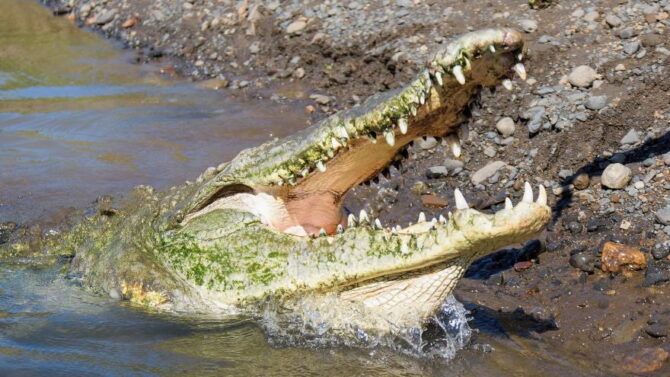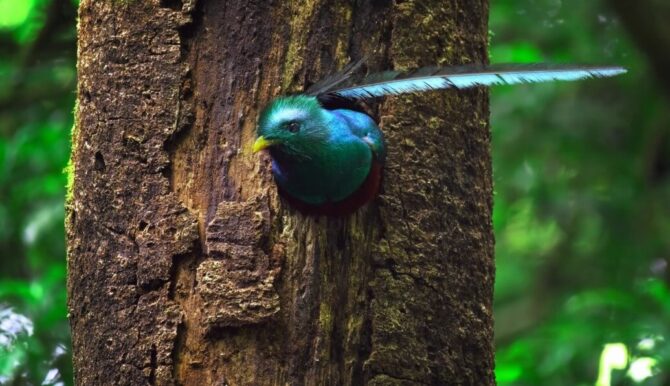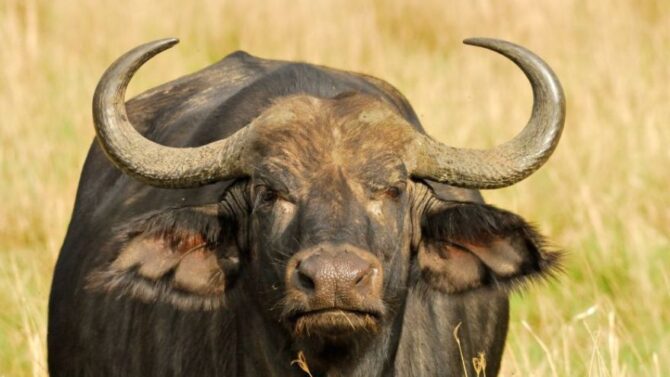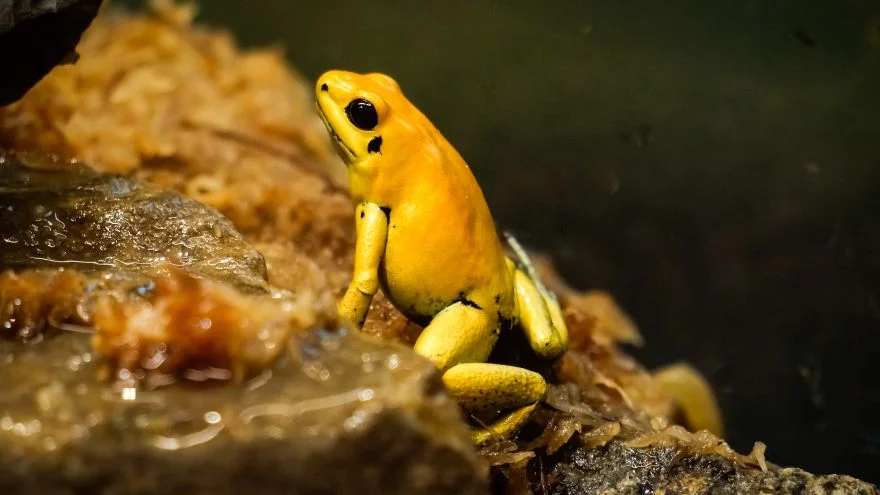The most dangerous animals in El Salvador include vast wildlife ranging from venomous snakes, coyotes, crocodiles, sharks, etc., many of which are dangerous and also deadly.
As you take in the refreshing breath of El Salvador’s beautiful landscape, the realization that this is a land of incredible biodiversity hits you.
While enjoying the beautiful sight of El Salvador’s wildlife, do note to look out for its most dangerous animals compiled in our list.
What are the Most Dangerous Animals in El Salvador?
1. Boa Constrictor
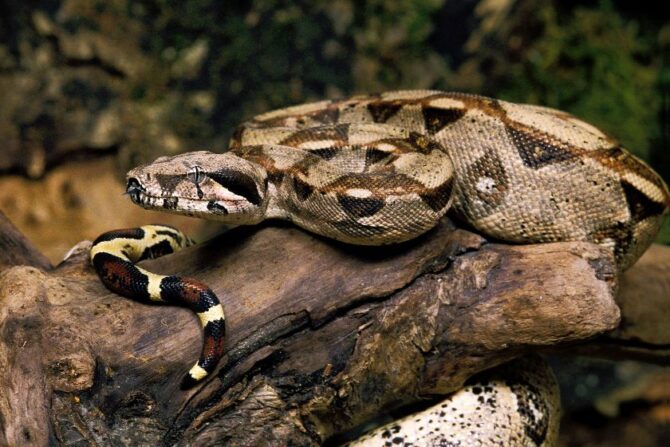
- Scientific Name: Boa constrictor
- Classification: Reptiles
- Habitat: Open savannah, wet tropical forests,
- Diet: Carnivore
- Conservation Status: Least Concern
Most fears about snakes have to do with their venom, but for the boa constrictor, what makes it dangerous is not its venom.
In fact, the boa constrictor is a non-venomous snake, but as its name reveals, it is a constrictor.
With a weight of 100 pounds and a length of up to 13 feet, the boa constrictor is known for wrapping itself tightly around its prey and squeezing the life out of them.
Contrary to most thought that they suffocate their prey, boa constrictor eliminates prey by cutting blood supply to vital organs.
While they often would not attack adult humans or big prey, the risks of constricting children exist, so the need to be wary of them.
Adult humans should also be careful of their bites. Though their bite may be non-venomous, it can be painful and, if not treated, lead to infection.
2. American Crocodile
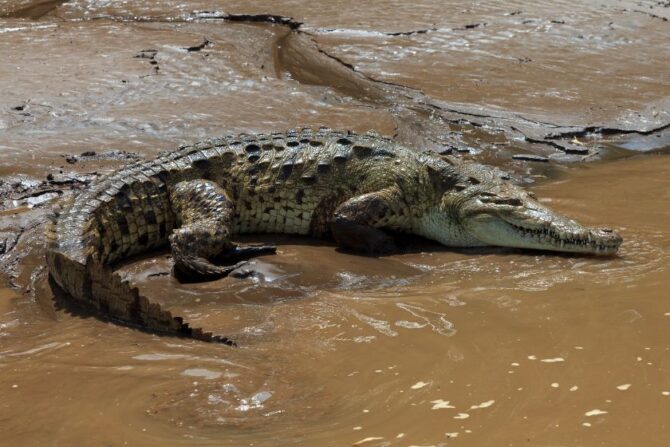
- Scientific Name: Crocodylus acutus
- Classification: Reptiles
- Habitat: Brackish saltwater areas, mangrove swamps
- Diet: Carnivore
- Conservation Status: Vulnerable
Though dwindling in numbers, the American crocodile rules the waters of El Salvador.
These ruthless predators weigh up to 2000 pounds, are up to 20 feet long, and hunt ferociously.
They hunt like most crocodiles with a strong bite, delivering deadly bites and drowning prey.
They are dangerous to humans as they bite humans even without the intention of killing them.
This can be deadly as they can bite essential blood vessels, which can result in intense blood loss in a matter of minutes.
Hence stay clear of waters inhabited by the American crocodile.
3. Coyote
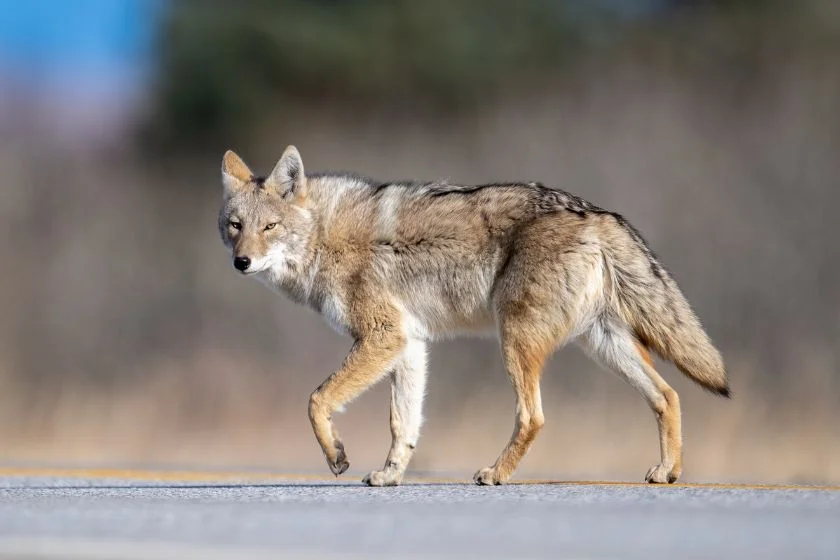
- Scientific Name: Canis latrans
- Classification: Mammals
- Habitat: Woodlands, temperate rainforests, open ponderosa pine forests
- Diet: Carnivore
- Conservation Status: Least Concern
These mischievous creatures often thrive close to human settlements and, in most cases, with little to no accidents.
But while coyotes may seem like peaceful neighbors, they remain predatory animals, and their instincts are not so different from similar animals.
Coyotes may not come off as dangerous as they are solitary and would flee once they sight humans.
But it can be different when they feel threatened and come into contact with people and will fight savagely to save their lives.
Also, when a lone human encounters a pack of coyotes, albeit rarely, they can be hostile and aggressive.
Also, like most creatures, coyotes may be aggressive during encroachment in their habitat, hence the need for you to be wary of this animal.
These types of wild dogs present threats to humans, and pets, as much as they can, are a nuisance and are mischievous.
4. Shortfin Mako Shark
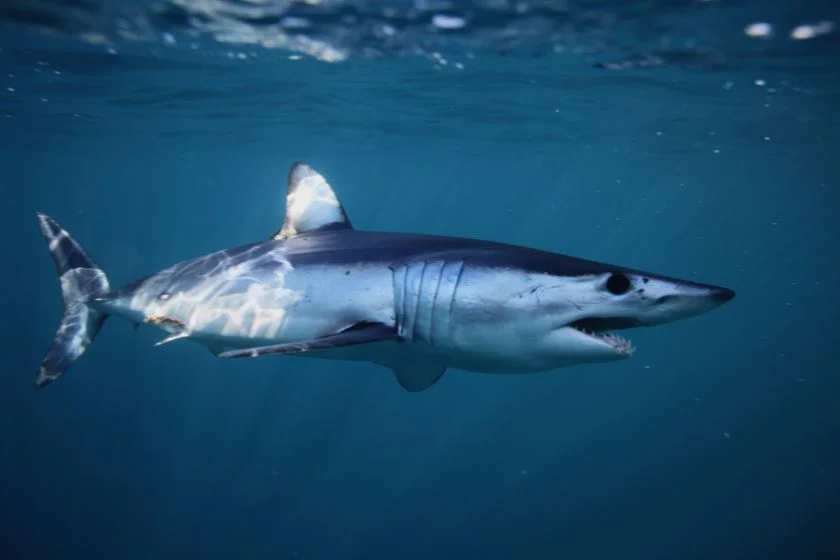
- Scientific Name: Isurus oxyrinchus
- Classification: Chondrichthyes
- Habitat: Temperate and tropical offshore waters
- Diet: Carnivores
- Conservation Status: Endangered
Known by many names such as bonito shark and blue pointer, this underwater beast boasts of incredible speed that it is dubbed the cheetah of the ocean.
The shortfin mako shark can travel as fast as 20 miles per hour and jump up to 30 feet out of the water.
How impressive.
With such abilities and with incredible strength, the mako shark is a top predator in the ocean and one to be feared.
In terms of anatomy, it is well built, weighing just under a thousand pounds and with an average length of 10 feet. This thus makes its movement quick, decisive, and deadly.
Often the mako shark has no business with humans, but as with most animals, encounters with humans often lead to aggressive behavior.
Mostly they attack humans due to human provocations, such as being caught in fishing lines.
They also get attracted to fishermen and may attack. Other than that, attacks can only be due to unnecessary provocation.
Records revealed that between 1580 and 2022, only 9 shortfin mako shark attacks on humans had been reported, with about 20 boat attacks.
Should you come across this creature in the waters of El Salvador, be sure not to attract them, as they swim in a figure-eight pattern and would definitely catch up with you.
5. Central American Coral Snake
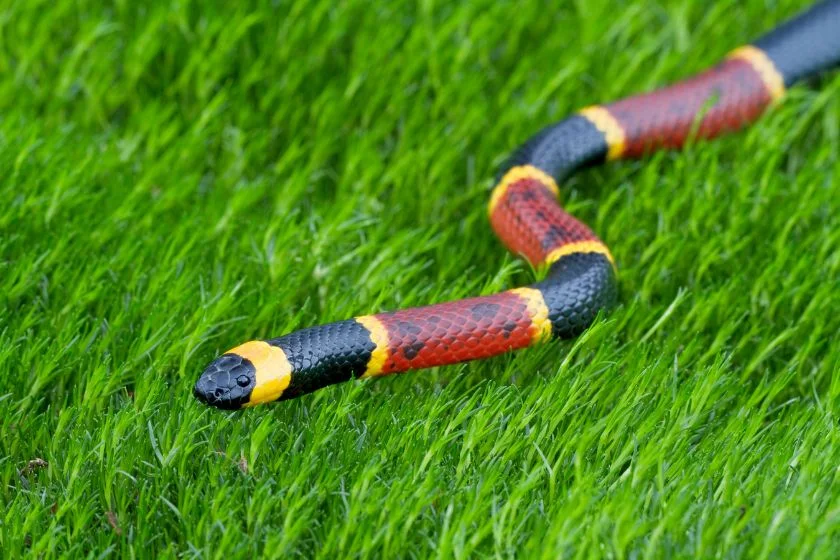
- Scientific Name: Micrurus nigrocinctus
- Classification: Reptiles
- Habitat: Lowland rain forest, lowland dry forest, lowland montane wet forest, lowland montane dry forest
- Diet: Carnivores
- Conservation Status: Least Concern
One of the most stunning creatures you would come across in the forests of El Salvador is the Central American coral snake.
As beguiling as its outer appearance is, it is by far one of the most dangerous. It may seem docile, but it is a ferocious predator.
They grow as long as 3-4 feet, and in a fascinating twist uncommon to snakes, it does not bite when aggressive. In fact, it is one of the most lethal snakes that are not aggressive.
However, this does not mean the snake will not bite when intensely provoked, so don’t force a reaction out of it.
When molested or restrained, it will respond by biting. Its bite may seem painless, but the venoms in the bites can do tremendous damage.
Its venom contains potent neurotoxins that can cause neuromuscular dysfunctions and can lead to death.
The Central American coral snake may seem similar to other snake species like the milk snake in looks but can be distinguished by the lack of red coloring on its head and tail. Hence do well stay clear of its path.
6. Oceanic Whitetip Shark
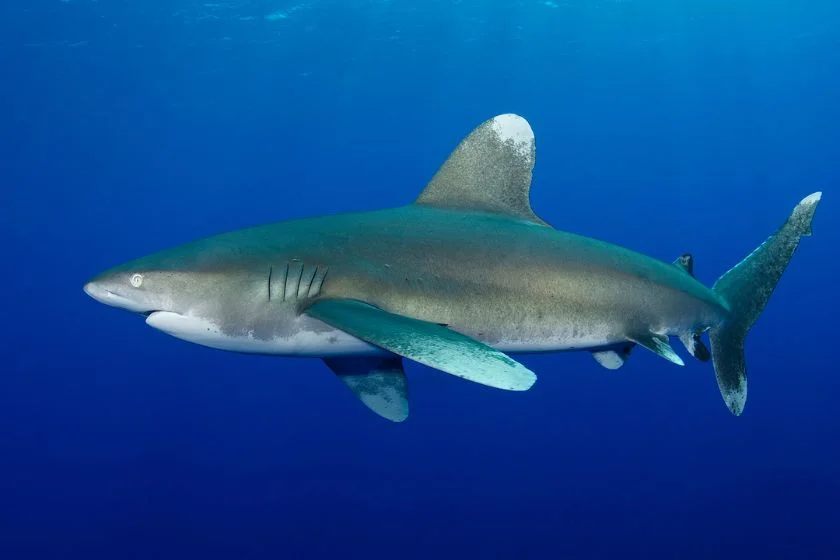
- Scientific Name: Carcharhinus longimanus
- Classification: Chondrichthyes
- Habitat: Tropical and subtropical waters
- Diet: Carnivores
- Conservation Status: Critically Endangered
Known by a handful of names such as the brown shark, silvertip shark, nigano shark, oceanic white-tipped whaler, and many more, it is quite easy to identify this shark.
Its primary identifying feature is its long, white-tipped rounded fins.
Unlike its other counterpart on this list, the oceanic whitetip shark has a different method of hunting, and humans are on its menu. How outrageous.
The brown shark is a slow mover and is very opportunistic. It is often said that it goes into a feeding frenzy during shipwrecks.
It is notorious for killing survivors of shipwrecks. It’s about ten feet long, and its 370 pounds of weight makes it agile but not fast, and it makes up for what it lacks in speed by being intensely opportunistic.
The feeding frenzy is one social behavior of this animal as they hunt in packs.
Attacks on humans by the oceanic whitetip shark are not quite much, but many believe this largely because they are few survivors to report such attacks.
Hence it is believed that it is one of the most dangerous sharks in the world, and you wouldn’t want to cross its path in El Salvador’s waters.
7. Pit Vipers
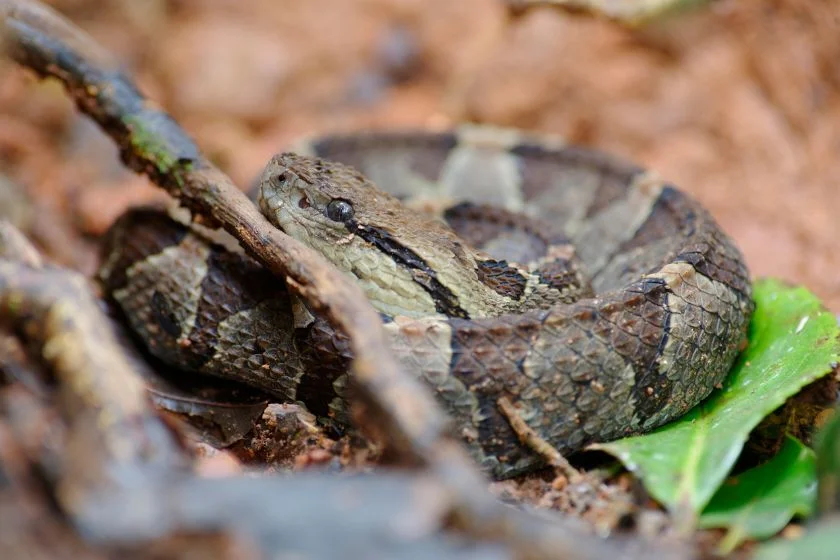
- Scientific Name: Crotalinae
- Classification: Reptiles
- Habitat: Humid rainforest
- Diet: Carnivores
- Conservation Status: Critically Endangered
El Salvador is home to a variety of pit viper snake species, and as such, you have to be wary of all.
The pit viper snake is dangerous primarily for a singular fact that sets it apart from other snakes; its venom. The pit viper boasts of toxins that contain both neurotoxins and hemotoxins.
This translates to the fact that venoms of viper snakes affect not just the nervous system of a person but also tissues and red blood cells.
As aggressive as pit vipers are, when they sight humans, they would hide and only resort to biting when they are threatened.
Caution should be exercised as you wander through the forest of El Salvador. You wouldn’t want to put your hands in the hiding place of a pit viper.
El Salvador Wildlife Safety Tips
Adhere to local laws
Laws and instructions regarding wildlife are often covered by local laws and officials in El Salvador.
As a result, do well to ask questions should you be confused about certain regulations.
Usually, before venturing into parks or natural wildlife habitats, guidelines would be given regarding behavior around wildlife. Do well to adhere to these instructions to the letter.
Keep your distance
As revealed by our list, El Salvador’s wildlife can be dangerous, and you would not want to cross paths with these animals.
Hence keep your distance as that would prevent you from being in harm’s way of these animals. This also would make these creatures never see you as a threat.
Do not swim alone
El Salvador’s waters are inhabited by fierce predators. Often when these predators sight a lone swimmer, they become emboldened to attack.
However, they tend to be discouraged when they see groups of swimmers.
In instances of attacks, while swimming, others would readily come to your aid.
Keep food out of sight
Store your food or snacks carefully and keep them out of sight.
Some of these animals have good olfactory receptors and can smell your food from a distance which will, in turn, make them attracted to you.
Get vaccinated
No matter how careful a person is, sometimes, mistakes happen. Before you go on a trip to El Salvador, make sure you are up-to-date on all routine vaccines.
This will be helpful in case you are stung or bitten. If you notice any symptoms after your trip, be sure to see a Doctor.
Conclusion
The central American country remains a beautiful destination for those who adore wildlife.
But as with wildlife, behavior can be aggressive and unpredictable.
As you take in the beautiful scenery and observe these most dangerous animals in El Salvador, be sure to remain careful and watchful while in their natural habitats.
